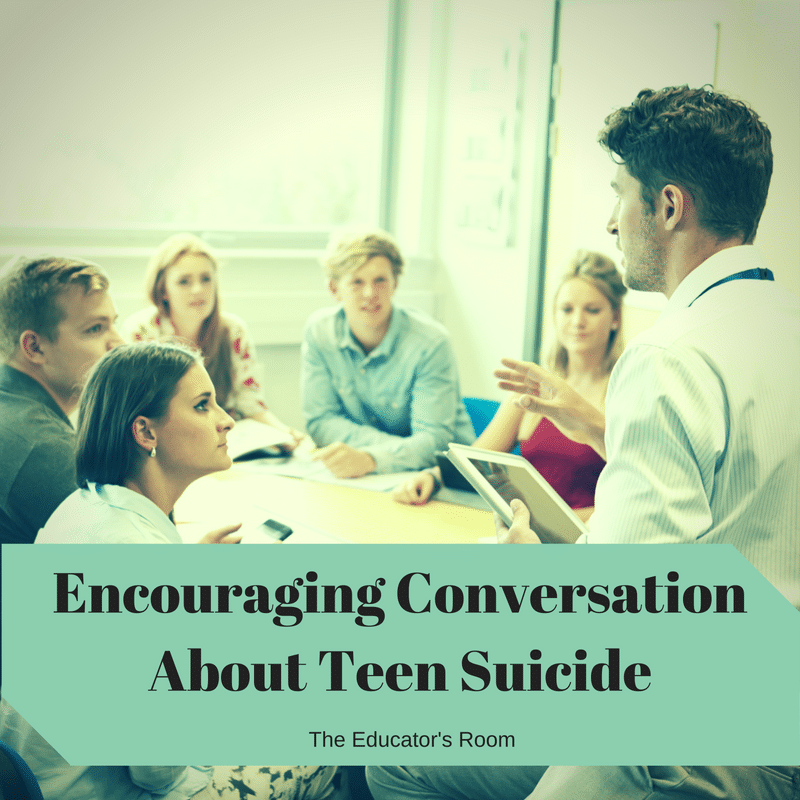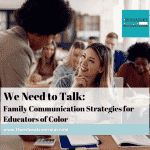We’re just a few weeks into the new school year, and already communities are mourning the tragic deaths of students by suicide. From the public outcry of Daniel Fitzpatrick’s parents to the private grief of classmates, teen suicide plagues the school community. How do we talk to our students about the devastating realities of depression and suicide? Unfortunately, most schools don’t empower their teachers to embrace the conversation; instead, the school avoids the topic or encourages counselors to step in.
Even though teachers don’t have counseling degrees, they have created stronger bonds with these students and should be encouraged to capitalize on the relationship instead of being forced to push the student to the counseling office. Part of being a good teacher is being a good mentor, and you don’t need a counseling degree to be that.
When I was in 8th grade, my classmate committed suicide. The school and parents entered a pact to “protect the innocent children” by telling us that our classmate’s death was an accident. Even as details surfaced, teachers and parents explained that his death was unintentional. As quickly as possible, they pushed us to return to normal. During my second year of teaching, a student committed suicide, and the faculty met before school to discuss our emergency plan.
The principal told us, “Your job is to teach and to go about the day normally, so if students are upset, send them to the library for counseling or call an administrator to handle them.” Throughout the day, students sought me out to talk, because they needed to be comforted by someone they interacted with daily, not an outside counselor. Please don’t misread me- I am grateful for the counselors who came to our building to help our students; the teachers needed the extra support. However, I disagree with the original instruction. My job isn’t solely to teach, and my job certainly isn’t about reinforcing normal during tragedy.
One of my students pulled me aside after study hall and told me that he was planning to kill himself. Instead of dropping him off at the counseling office, I set my class to work on an assignment and had a private conversation with the student. After we spoke, we met with the counselor while another teacher worked with my class. Later that day, my department chair scolded me for putting a conversation with a student above teaching a class.
I don’t regret my actions, because that student is alive and well today. For whatever reason, this student chose to talk to me instead of a counselor, so in that initial moment, I was the person he needed, and therefore, I responded in the best way I could: I listened to his story. This isn’t to say that all teachers need to follow my lead; however, if teachers are willing to mentor students in this way, the school administration should provide the tools and support to do so. Handing us the signs of suicide and directing us to counseling services aren’t enough. Together, as a unified team, we can effectively serve our students struggling with depression. It all begins by opening the door to a conversation.
So how do we encourage the conversation in a constructive way within the art of teaching? Being an English teacher, I look to literature to open the door for me: Jay Asher’s Thirteen Reasons Why?, Suzanne Young’s The Program, and Jodi Picoult’s The Pact.
Asher’s Thirteen Reasons Why? seamlessly intertwines the narration of Clay Jensen and Hannah Baker as Hannah tells the story of the events that led to her suicide through tape recordings (Clay is listening). Clay and the readers ride the roller coaster of Hannah’s story in order to realize that what began as a snowball developed into an unstoppable (according to Hannah) avalanche.
When Jay Asher spoke at my school as part of his anti-bullying campaign, he reinforced one of his book’s themes: We never know how our actions affect each other behind closed doors. Students resonate with this message and Hannah’s character. Asher said he wrote about events that seem simple in isolation, but when rolled together, the events can become suffocating. Another reason why I appreciate this novel’s content is it discusses the aftermath of suicide on the community. The reader watches Clay transform as he grieves for his classmate, and ultimately, the grief encourages a positive change. This novel is a popular choice amongst freshman and sophomores for independent novels. I have included it as part of a Literature Circle unit.
Young’s The Program is about a futuristic society that has identified teenage suicide as an epidemic and therefore has established a protocol for depressed and potentially depressed teenagers that requires them to (involuntarily) check in to a program that essentially erases the person’s essence. Sloane, the protagonist, lives in constant fear of her parents forcing her into the program because her brother and good friend committed suicide.
My school’s book club selected this novel as their favorite out of eight books read last year. During a Literature Circle discussion, students voiced that they related to Sloane’s paranoia of adults’ reactions to the taboo of suicide; my students said that if they talked about suicide, then adults placed unwanted targets on their backs. They believed that an idea that is prominent in their world is off-topic. This book proclaims that open conversation is a part of the grieving process and that adults and children need to partner together to overcome depression.
Picoult’s The Pact depicts the long journey leading to suicide and the devastating aftermath that affects a community. Emily Gold and Chris Harte are next-door neighbors who appear to have the perfect love story, until one night that ends with Emily dead and Chris at the crime scene. Chris claims that they had entered a suicide pact. As the story unfolds, the reader discovers Emily’s hidden despair and Chris’s struggle to help the love of his life. The Golds’ and the Hartes’ friendship falls apart as they attempt to pick up the pieces.
This novel shows students the terrifying dangers of hiding depressive and suicidal thoughts. While reading this book, my students have challenged the definition of true friendship: Under what circumstances is it better to break a friend’s confidence than to keep it? Sometimes being a good friend means reaching out for help. This novel is more suited for juniors and seniors.
Last year, three students in one class spent time in a facility to fight the battle of suicidal thoughts. Since I had established a relationship with each of these students, when they returned, they asked me to partner with them during their recoveries. I recommended these books to them to fuel our conversations. One of the students told me that before he spent time in the hospital he wanted help, but he didn’t know how to ask- he felt as if he couldn’t ask. As a friend of someone who committed suicide, my heart breaks for these students.
Once again, since teachers are on the front lines, every school should support and empower them to discover methods to encourage this difficult conversation. No student, no matter his or her age, should believe that there is no hope for help. After all, these conversations save lives.]






